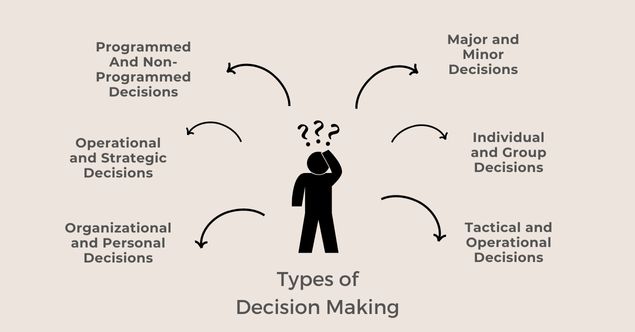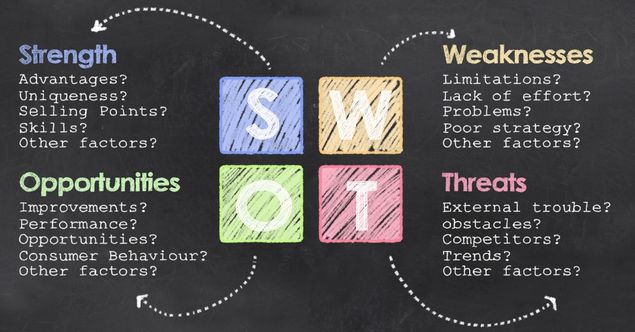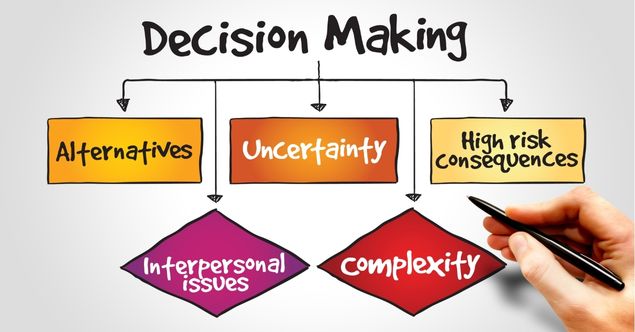Today Modern management involves a lot of decision-making. In the demanding environment in which they work, every person makes many decisions in life. Decisions that seem to be the most difficult are those that need a deeper level of thought.
For any organization or leader, the ability to make decisions is essential for success. As the world becomes ever more complex, decision-making has become even more crucial as well. It's important to understand how to weigh different options and come up with the best possible outcome for a situation.
Making a decision involves analyzing all available information, weighing up pros and cons, and predicting the likely outcome of different courses of action. This process can be daunting and time consuming. Furthermore, depending on the complexity of a decision, there may be several stakeholders involved each with their own interests in mind.
Decision making is an important skill that requires careful thought and analysis. In this article we will discuss important concepts used in making decisions and explore the meaning behind them. Moreover, we will look at some tips to help you make better decisions in a timely manner.
Making good decisions is a method that must be learned. But first, let's understand: What is decision making?
Decision Making
Decision Making is a kind of management strategy and process for selecting the most sensible solution from a set of alternative problems to achieve the best result.
It’s an important step since they must decide on organizational and managerial actions and priorities. Depending on the matter, time, resources, and other factors.
Management decisions are important because they frequently affect life, business activities, organizational performance, and corporate objectives.
Types of Decision Making

1. Programmed And Non-Programmed Decisions:
Programmed decisions are regular and repetitive decision-making processes. These decisions deal with common and frequently occurring issues in an organization such as buying behaviour of consumers, sanctioning of different types of leave to employees, purchasing decisions, salary increments, etc.
Non-programmed decisions are not routine (daily basis) or common in nature. These are related to exceptional situations in which guidelines or routine management are not set. For example, problems arising from a decline in market share, and increasing competition in the business environment.
2. Operational and Strategic Decisions:
Operational decisions are just the normal functioning of the organization. These kinds of decisions do not need much time and take a shorter time as compared to other decisions taken.
Strategic decisions include all current issues and problems. The main idea is to achieve better working conditions, better equipment, efficient use of existing equipment, etc.
3. Organizational and Personal Decisions:
If the decision is taken collectively while keeping in mind the organizational goal, it is known as the organization goal, and if any person from the organization takes any decision in a personal capacity (affecting his/her life) it is known as a personal decision. These decisions may affect the organisation's functioning as well.
4. Major and Minor Decisions:
These are classified as the type of decision-making in management where decision-related to purchase new property is a major decision. Let's see the decision-making examples of minors as the purchase of stationery is a minor decision. Minor decisions can be taken by the superintendent.
5. Individual and Group Decisions:
Decision-making is the process of decision taken by an individual, and when an individual takes a decision it is categorized as an individual decision. Usually, decisions are taken by individuals within the policy framework of the business.
Group decisions are taken by a group of people in the form of a standing committee. Generally, important types of decisions in management are shifted to this committee of people. The main aim of a group decision is to involve the maximum number of individuals which can be more than 3 people.
6. Tactical and Operational Decisions:
Decisions that are pertaining to various policy issues in the organization are known as policy decisions. These are taken by top management and do have a long-term impact on the business.
For example, decisions regarding the plant's location or manufacturing volume. This kind of decision is known as tactical decisions
Operational decisions are daily decisions that need to be taken for the proper functioning and operation of the business. These can be taken by middle or lower-level managers.
Here are some decision-making steps
Step 1: Identify Your Goal
First, identify the purpose of your decision by asking yourself what exactly is the problem that needs to be solved. And why do these issues need to be solved?
Figuring out what's most important to you will help you make better decisions.
Step 2: Gather Information
When making decisions it is best to gather necessary information directly related to the matter. Doing this will help you to better understand what needs to be done in solving the issues.
Step 3: Consider the Consequences
This step can be just as important because as step it will help you determine how your final decision will impact yourself and others involved in the matter.
Step 4: Make Your Decision
Now it is time to make a choice and actually execute your final decision. Ask yourself, does it feel right? and does this decision work best for you, and in the future? You should feel good about the result when you come over with those questions.
Step 5: Evaluate Your Decision
Once you have made your final decision and put it into action, it is important to evaluate the decision and the steps you have taken to ensure that it works.
Importance of decision-making
1) Boost Your Productivity:
It will enhance your workforce’s productivity more than once if management excels at decision-making skills.
2) Making the Most of Your Resources:
When it comes to larger companies with large pools of resources, management must make the best use which will help your business to reach its full potential by preventing resources from becoming limited.
3) Cost-effectiveness:
Placing your products on the market at a reasonable cost influences your company’s long-term success.
4) Recognize Opportunities:
Decision-making allows opportunities to slide through your business.
Decision-making for management
1. Utilisation of Resources
Decision-making helps to utilise the available resources for achieving the aims and objectives of the organisation.
2. Facing Problems and Challenges
Decision-making helps the business to face and tackle new problems and challenges. Quick and correct decision making can help to solve problems and to accept new challenges.
3. Achieving aims and Objectives
Decision making helps the business to achieve all its objectives quickly. This is because rational decisions are made after analysing and evaluating all the alternatives.
4. Motivates Employees
Decision-making results in motivation for the employees. This is because the employees are motivated to implement new decisions and the organisation makes high profits.
What is a decision-making framework?
A decision-making framework is used for effectively and accurately designing and developing assessment ways and tools for an organization.
The framework effectively clarifies how and when different members and factors get involved in the decisions, and the opportunities associated with the decisions- making that can ensure more favourable outcomes.
Decision frameworks revolve around principles, procedures, and practices for proceedings from data and desires to choices that convert into favourable outcomes.
What is a basic management tool used in decision-making?
1) SWOT Diagram

SWOT meaning is Strengths, Weaknesses, Opportunities, and Threats. SWOT Diagram is an important management application that helps any organization assess its current situation. It works as a basic guide for strategic planning of management.
2) Decision-Making Diagram

Decision-making diagrams are graphs that enable you to map out the decision you have taken and which one of the best decision-making methods that helps you to estimate eventual actions based on the outcomes and risks.
3) Strategy Map

A strategy map is a diagram that can be used to document strategic business aims and objectives.
4) Decision Matrix

A decision matrix is a technique that contains values that helps you to identify and analyze the performance of the management. The elements of a decision matrix show results depending on specific criteria.
5) Pareto Analysis

Pareto Analysis is a method for decision-making known as the 80/20 rule meaning, 20% of your activities will account for 80% of your outcome.
Summary
Making a decision is considered one of the most important tasks of management. The decision-making as the growth and failure of an organization is dependent on timely decisions taken.
The importance of decision-making lies in the way it helps you in choosing the right option from various options. Before making a decision, there is a need to gather all available information and to know its pros and cons. It is very important to focus on steps that can help in taking the right decisions.
Decision making is an important skill in life, whether when deciding between job offers or choosing which university course to study. The ability to weigh up different options and make solid judgments that are right for us is key to success.
Understanding the fundamentals of decision making is the first step on the path to improved outcomes. This article will introduce you to some of the fundamental principles of decision making, examining key terms like rational decision making and bounded rationality.
FAQ's:
Decision-making tools help identify all the activities that must take place for a decision to be made and executed well.
Decision-making skills are all of the skills you need to make an informed, rational decision.
Good intentions, determination, and willpower are skills people think they need when trying to make healthy lifestyle changes.





